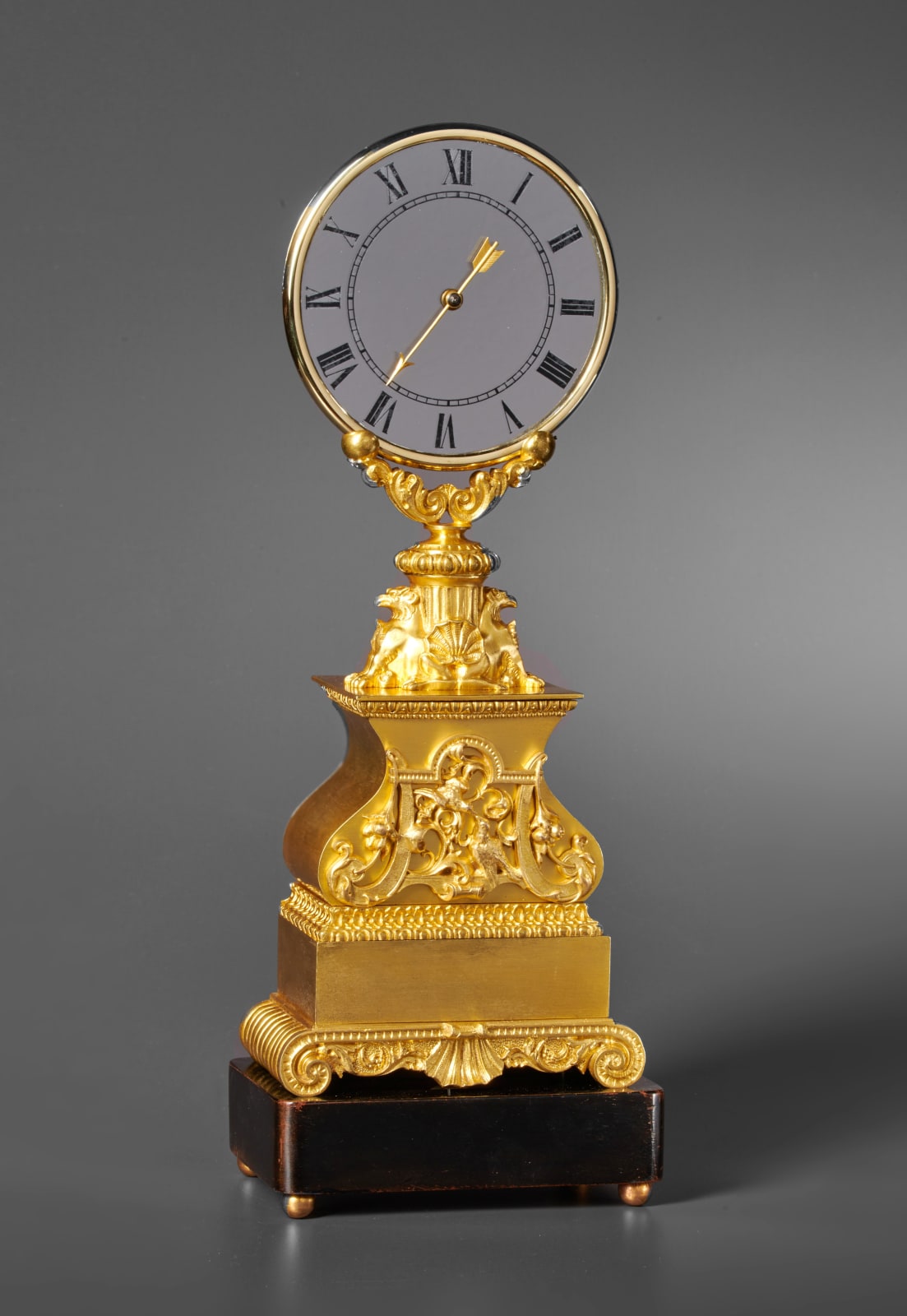Jean-Eugène Robert-Houdin France, 1805-1871
Literature
Derek Roberts, Mystery, Novelty & Fantasy clocks, pp. 225-226
A rare gilt bronze Mystery clock by Jean-Eugène Robert Houdin. The transparent glass dial and single gilt hand within a gilt bezel above the vase shapes gilt case, on a baluster plinth concealing the link to contrate wheels mounted within the case and on the front plate a two train circular movement, anchor escapement with silk thread suspended pendulum, count wheel striking the hour and half hour on a bell, mounted n a wooden base.
Paris, date circa 1840
Height 39 cm
In the late 1830's, Robert-Houdin began to make mystery clocks with their movements hidden in the base of the clock. This clock is one of his second series of clocks, and the first to incorporate a transparent dial. The dial is made in two parts. The numerals are painted on a fix disc. The hands are moved by a second disc with the finely notched rim that engages a worm gear in the gilt support. This mechanism was the inspiration for the 20th Century mystery clocks of Cartier
Jean-Eugène Robert was born in the town of Blois, in central France, on December 6, 1805. His father, Prosper, was a watchmaker; his mother, Marie-Catherine, died when he was young. From 1816 to 1823 Robert attended school at the University of Orléans, where he studied law. However, after his graduation, he returned home to follow in his father’s footsteps and became a watchmaker.
Yet fate had a different path in mind for the young Robert, who after purchasing a set of books on clockmaking returned home to discover that the shop clerk had mistakenly given him a package containing a two-volume book of magic. Intrigued, Robert not only kept the books but pored over them and spent hour upon hour teaching himself the fundamentals of magic.
As Robert’s passion for magic deepened, he sought instruction from a local magician who helped expand his talents to the point that he began to perform professionally. At one such event, he met Cécile-Églantine Houdin, the daughter of a renowned clockmaker. The two fell quickly for each other and were married in July 1830, with Robert adding her name to his own to become Robert-Houdin from then on. The newlyweds moved to Paris, where Robert-Houdin worked in his father-in-law’s shop as he continued his career in horology.
When one of Robert-Houdin's clocks was exhibited in London in 1838, onlookers were enchanted, coming up with their own theories on how hand moved. As the movements for this clocks were invisible to the naked eye, it was even suggested they were operarwd by magnetism. Robert-Houdin showcased his creations at the Exhibition of French Industry in 1839, for which e won a bronze medal.
